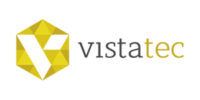The Upstream Nature of Language Data for LLMs
You cannot simply use your content assets as they are to create Large Language Models (LLMs) and to feed AI-powered applications successfully. Instead, you need to plan and create appropriate datasets to meet AI’s content effectiveness requirements. It is essential to focus on developing and leveraging language data upstream before moving to AI implementation and adoption downstream. This article highlights the crucial role of language data in effectively and sustainably training AI.
How Does AI Come into Play in Global Content Management?
The rapid advancement of AI, including Generative AI, pushes global content to new boundaries and creates new challenges and opportunities for global organizations. Beyond the hype surrounding AI, it should be viewed as a transformative force that can bring real value when adopted in a value-driven and inclusive manner. When utilized correctly, AI has the potential to transform end-to-end content supply chains and revolutionize working methods that have been in place for years, if not decades.
Why Is It Important to Move Beyond Words and Assumptions About AI?
Many business leaders view AI as a top priority to remain competitive and win new business. There has been extensive discourse about what it is, what it does, and how to explore or infuse it within organizations. However, there have been fewer discussions about the scope and nature of changes AI brings about for human resources, business processes, and tech stacks.
Comprehending the requirements for AI success and the transformations needed to turn organizations into AI-driven powerhouses is crucial. This comprehension is an area where language data comes into play.
How Can AI Be Compared to the Gold Rush?
Much like the Gold Rush convinced many people in the 20th century to leave their homes and jobs to become rich, today, AI is attracting leaders looking to grow their companies. In the case of AI, valuable data sets are like gold mines. However, finding these data sets is just the first step in creating reliable AI. It’s also important to extract the data safely and properly, just as gold must be extracted from the earth. Many organizations are sitting on gold mines that are made of their content assets, but they need to convert these assets into data-feeding Large Language Models (LLMs) and make AI create real value.
What are LLMs, Generative AI, and Language Data?
Language data forms the foundation of Large Language Models (LLMs) and Generative AI, which are closely interrelated concepts. It’s crucial to grasp the intricacies of these technologies to appreciate the significant and timely role that language data plays in driving AI-enhanced content creation.
What are LLMs?
Large Language Models (LLMs) are machine learning models that use deep learning algorithms to process and understand natural language. These models are trained on massive amounts of data to learn patterns and entity relationships in the language. LLMs can perform many language tasks, such as translating, analyzing sentiments, or managing conversations. They can understand complex data, identify entities and relationships between them, and generate new text that is coherent and grammatically accurate. LLMs are foundational models in natural language processing. Typically, LLMs contain at least one billion parameters to build complex artificial neural networks. Popular LLMs include Generative Pre-trained Transformer (GPT) by OpenAI, BARD by Google, and LlaMA by Meta.
What is Generative AI?
As defined by Gartner, Generative AI refers to AI techniques that learn a representation of artifacts from data and use it to generate new and unique artifacts that resemble but do not repeat the original data. Generative AI can produce entirely novel content (including text, images, video, audio, and structures), computer code, synthetic data, workflows, and models of physical objects. Generative AI can also be used in art, drug discovery, or material design.
All LLMs are a form of Generative AI. Practically speaking, Generative AI is any AI that can create original content. Generative AI tools are built on underlying AI models like LLMs.
What is Language Data?
When it comes to defining language data for linguistics and computer science, it refers to any data that is in the form of human language. This includes written texts, spoken words, or sign language.
Language data is often used in natural language processing, computational linguistics, and artificial intelligence to train models, understand human language patterns, and develop applications like speech recognition, machine translation, and sentiment analysis.
In more specific contexts, such as programming, language data refers to data defined and manipulated using a particular programming or scripting language. For example, when programming in Python, language data could refer to variables, strings, lists, dictionaries, etc., defined and manipulated using Python syntax and commands.
Why is language data critical to making AI create value?
Language data for AI refers to the vast amounts of data that AI models are trained on. If data sets for training purposes are made of original content that is not correct and trustworthy, the generated content will not be perceived as relevant or valuable in any language.
AI is as effective as you make it. In other words, it is up to you to identify, select, and use the appropriate language data to train it initially and on an ongoing basis. When crafting language models, language data is what blood is for humans: vital. It must meet specific requirements for linguistic, cultural, and legal accuracy. It must also reflect what organizations want the produced content to be and to do.
What Is the Significance of Language Data in the Localization Industry?
In the past, analyzing, using, and handling language data was challenging because it didn’t have an apparent and measurable value. As a result, most companies have been holding onto their content assets without converting them into qualitative data sources for quite some time. This era of under-utilization is now ending as AI cannot live without language data, and companies must take on the challenge of collecting and managing it.
These challenges are real and present short-term opportunities for suppliers of localization services willing to help their clients by identifying, creating, and delivering language data enabling Generative AI to enhance value-adding areas, including traditional localization, terminology management, machine translation, human post-editing, linguistic quality, content creation, and multimedia production.
What Is the Impact of Language Data on Localization Teams?
As AI has been explored and piloted across industries and functions, it has triggered concerns among localization teams, who often fear that it will reduce the need for their roles. As a matter of fact, the need for language data gives localization teams access to a new world of opportunities related to language data acquisition and processing at the crossroads between computer science and linguistics. The skills and knowledge of localization teams, including expertise in language management and cultural intelligence, are invaluable in ensuring effective language data. Required tasks may include:
- Content sourcing to identify and select relevant content sources that are either already available as data (e.g., segments in translation memories) or yet to be converted into language data (e.g., files in various formats and languages)
- Content extraction to capture the relevant content from multiple sources
- Content conversion to convert native content from files into data-ready content, such as transcription
- Language data annotation to label language data so that the machine understands and memorizes the input data using machine learning algorithms
- Language data tagging to define meaning to different types of data to train large language models according to pre-defined criteria and goals
- Language data curation to organize and integrate collected data, which implies cleaning up data, avoiding pollution, and extracting meaningful information
These key language data acquisition and processing phases are best managed by localization teams taking on new roles and responsibilities, such as content transcribers, content assets managers, data annotators, language data collectors, language data testers, and language data managers.
What Is the Impact of Language Data on Localization Processes and Technology?
The significant impact of language data in terms of processes is on workflows and content supply chains. For a long time, workflows have been based on file transactions, powering localization lifecycles managed by project managers receiving source files and assigning jobs to linguists, content engineers, and QA experts before finally delivering localized files to clients or stakeholders. AI is changing this way of working and is requiring workflows based on language data flows used by the machine to provide localized content.
The use of language data is also transforming tech stacks to turn them into robust content operations ecosystems. Such ecosystems include localization systems and tools to manage content and data services, which are necessary to create and maintain language datasets. In addition, these ecosystems become more AI-powered to enable humans to create content with Generative AI features and, therefore, cover the whole content supply chain, from creation to delivery.
Contact us to discover how Vistatec can help.

